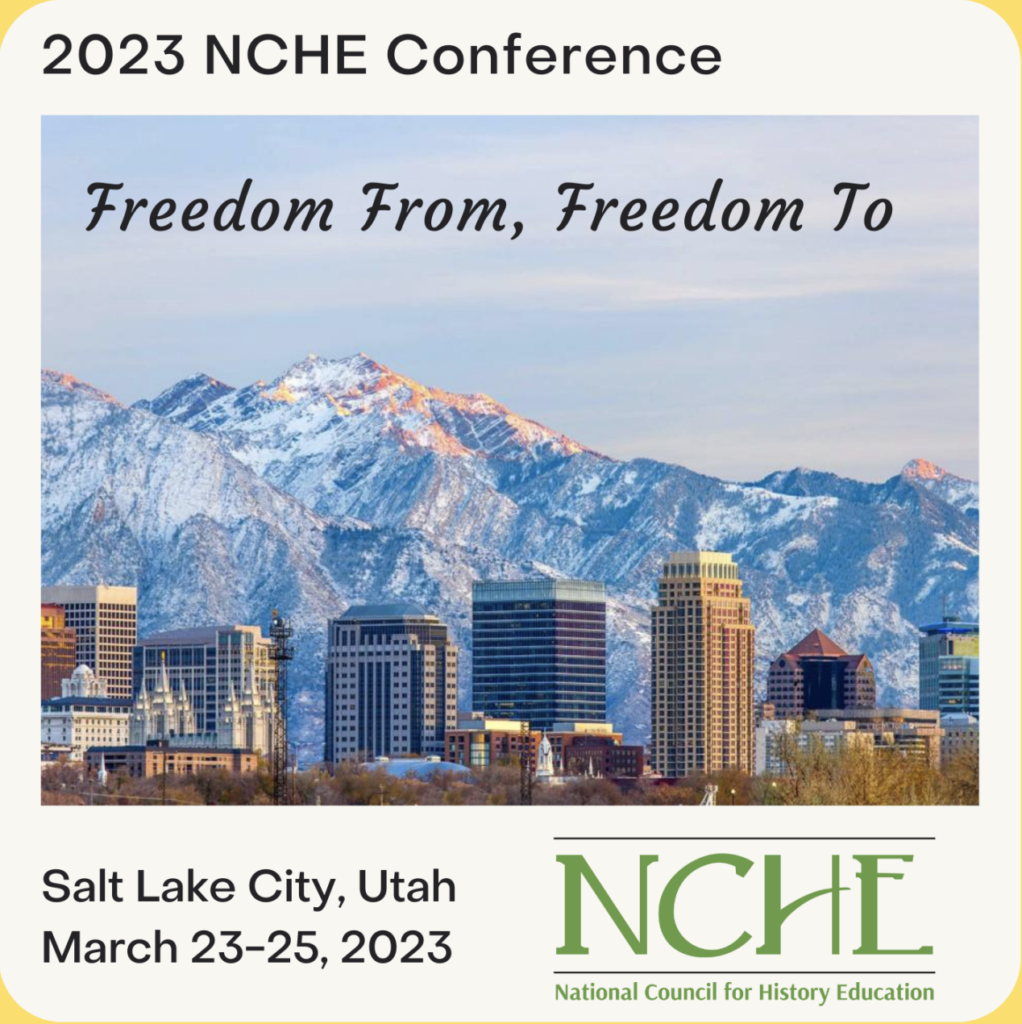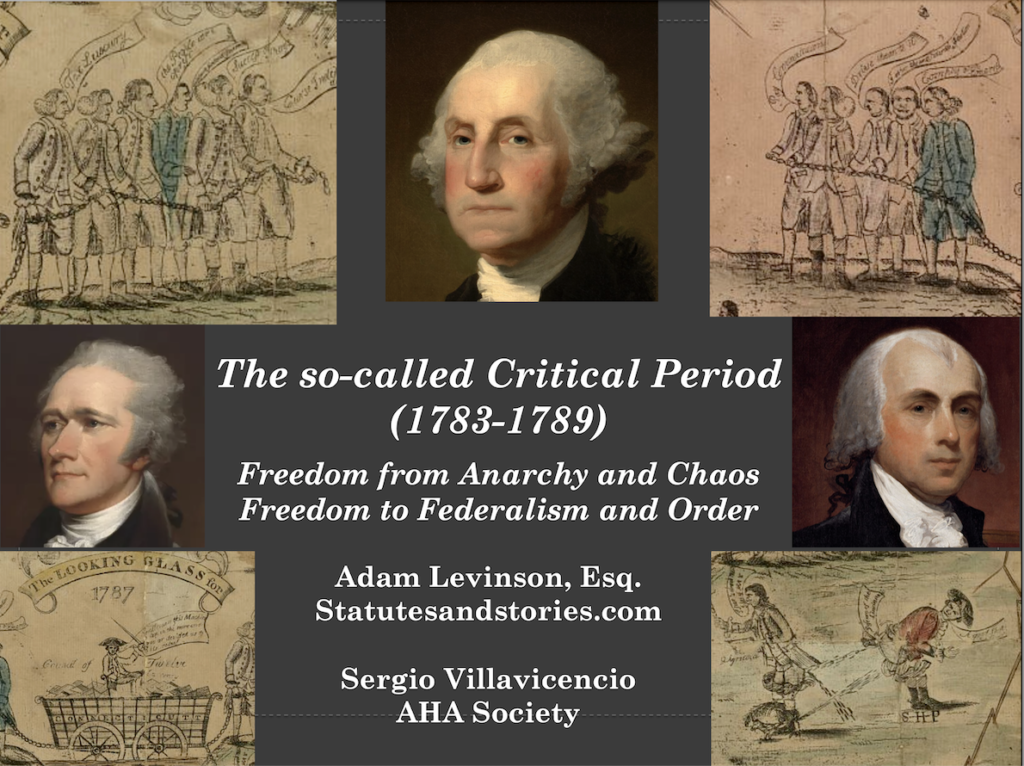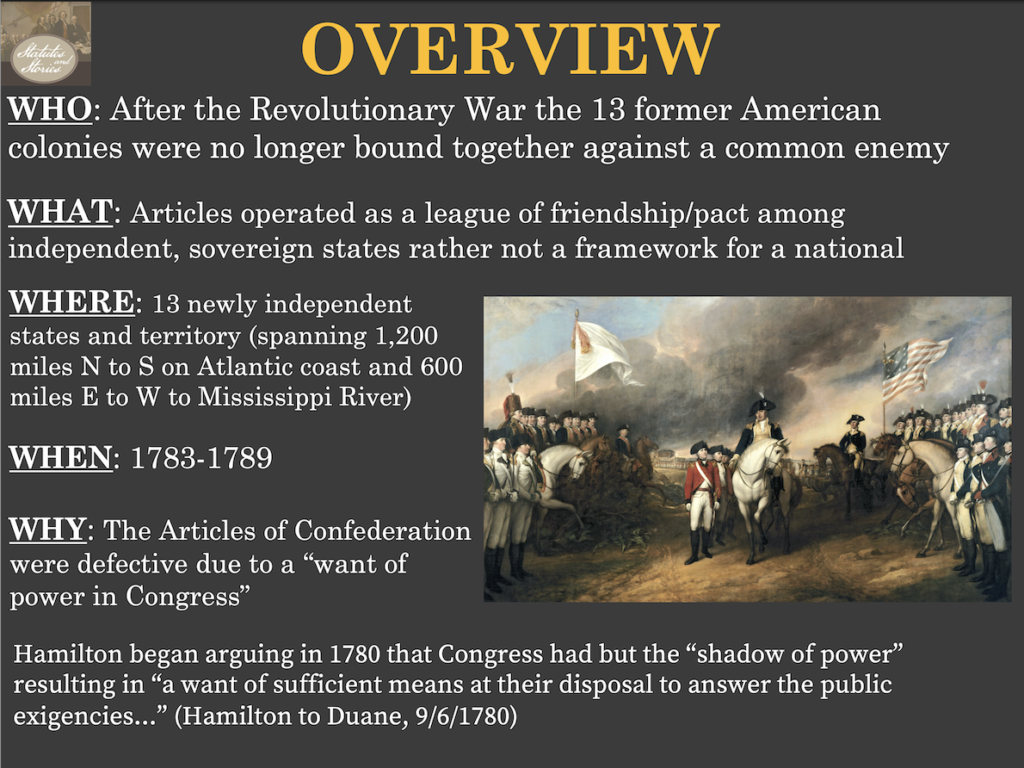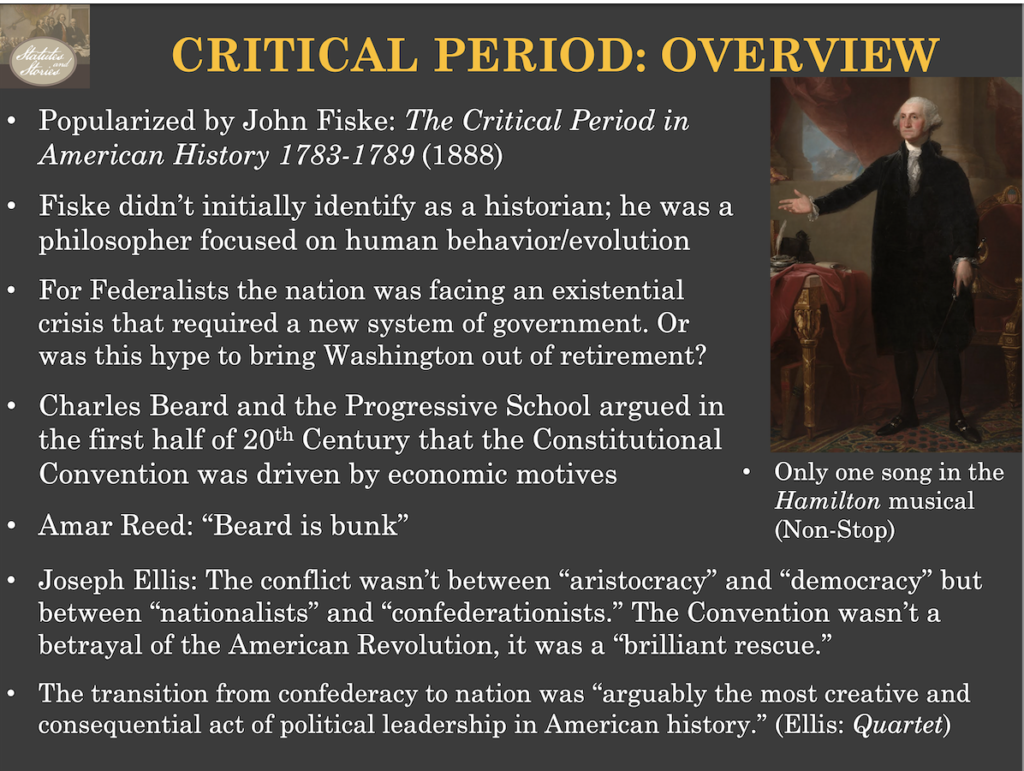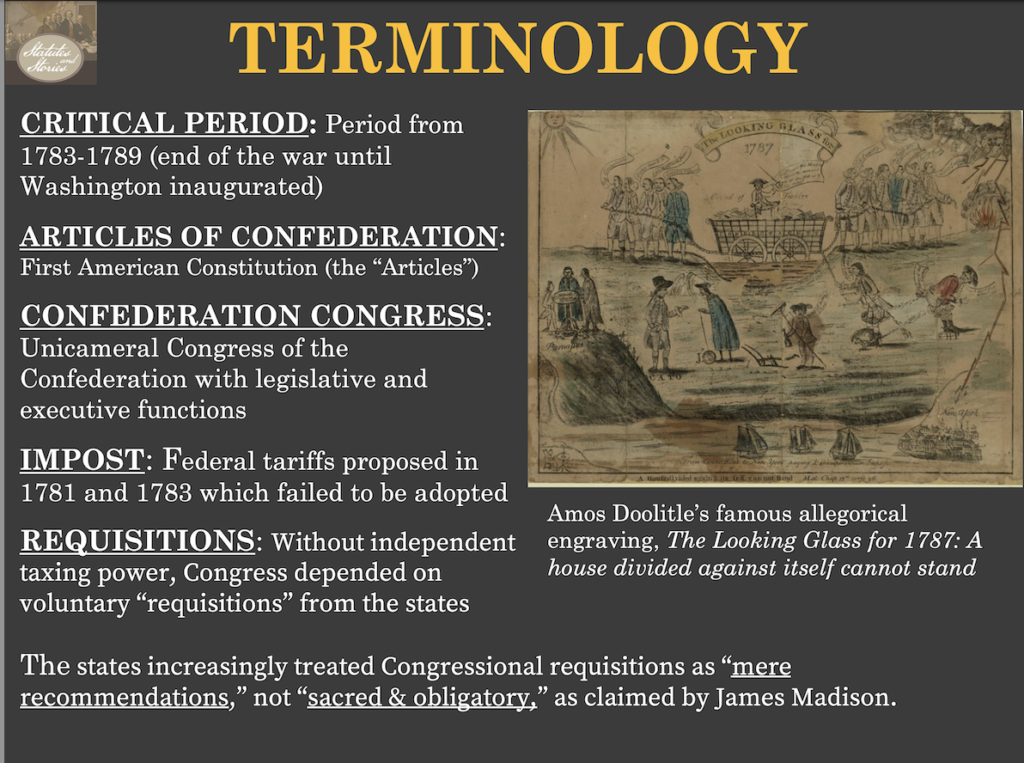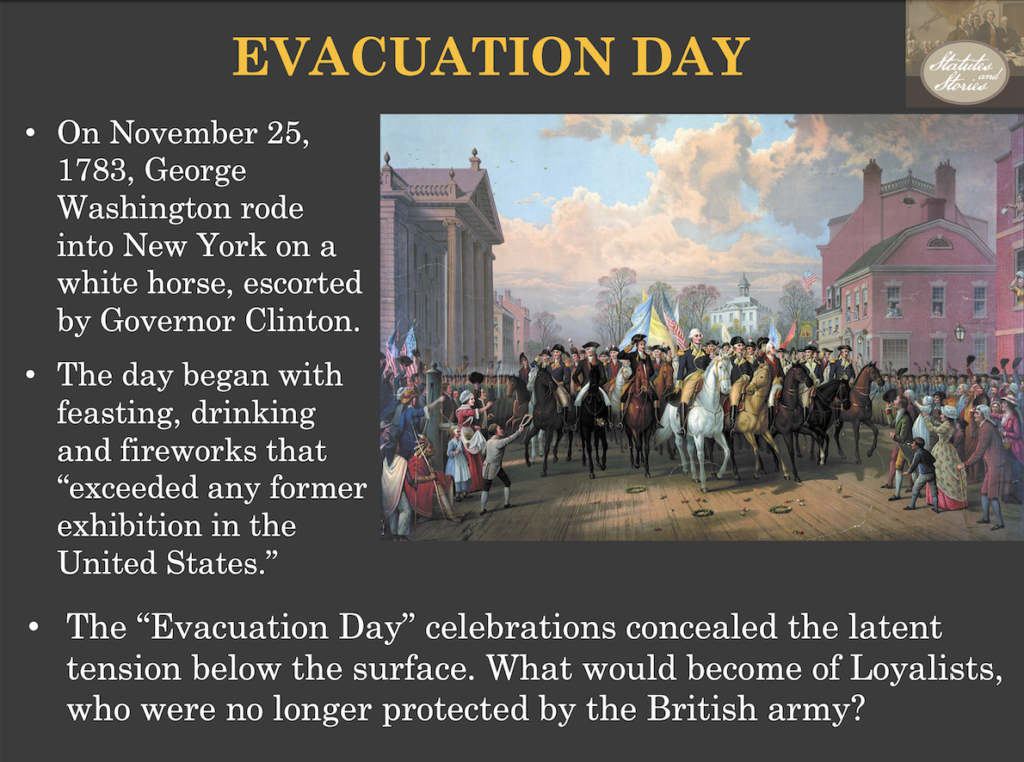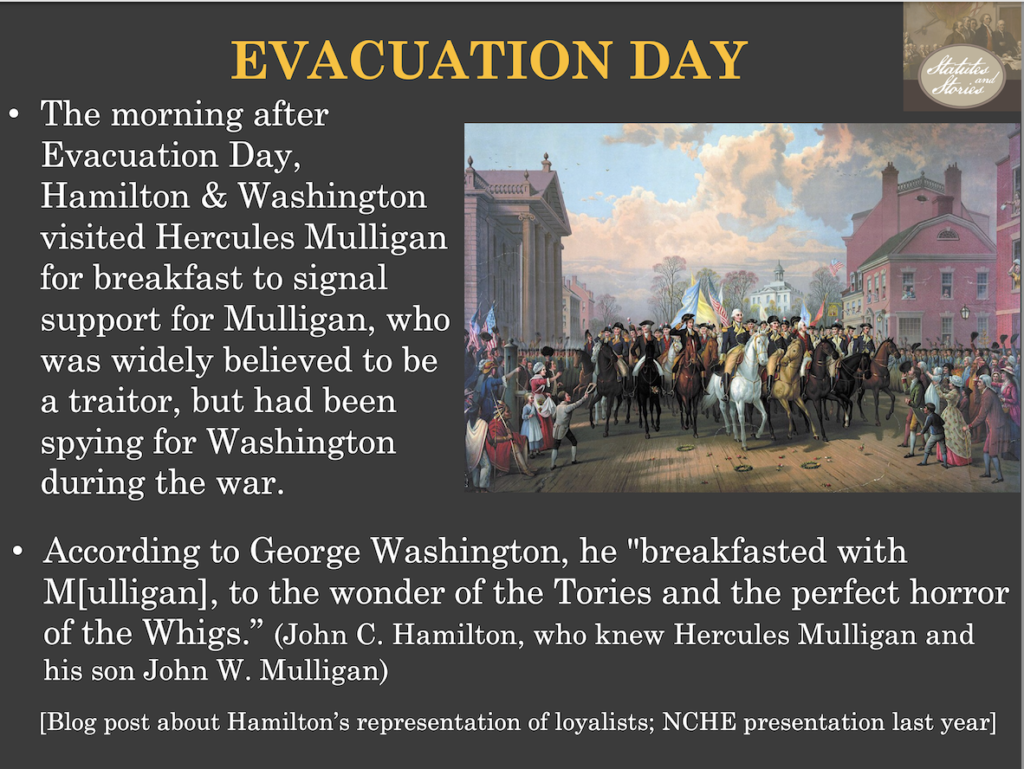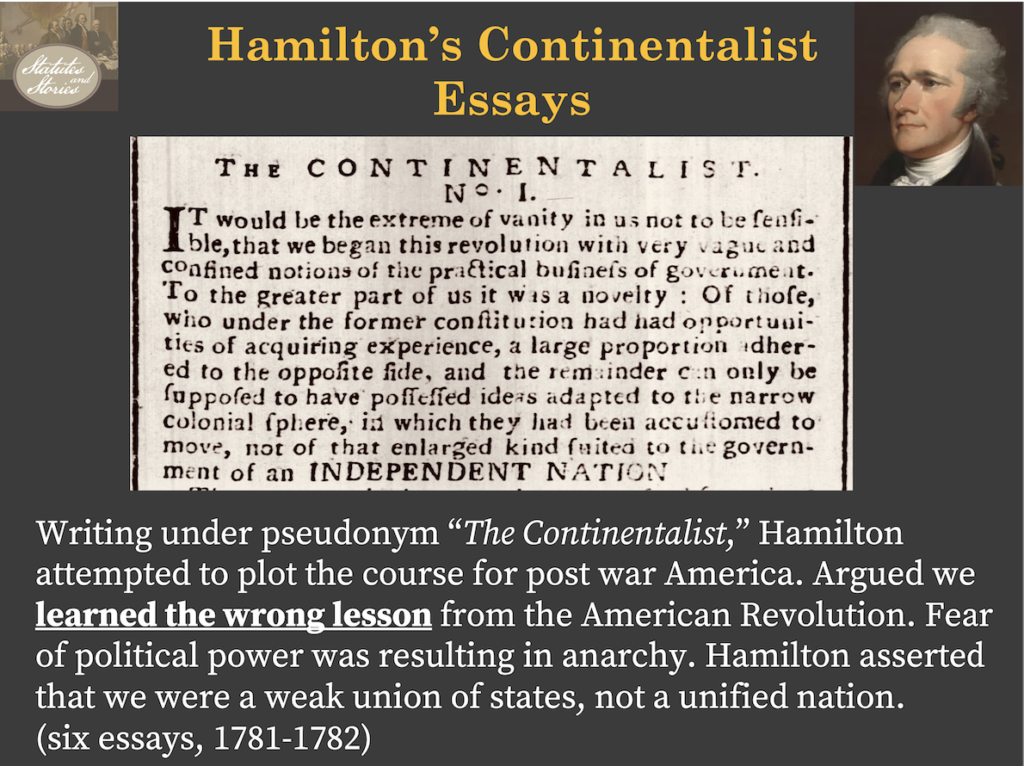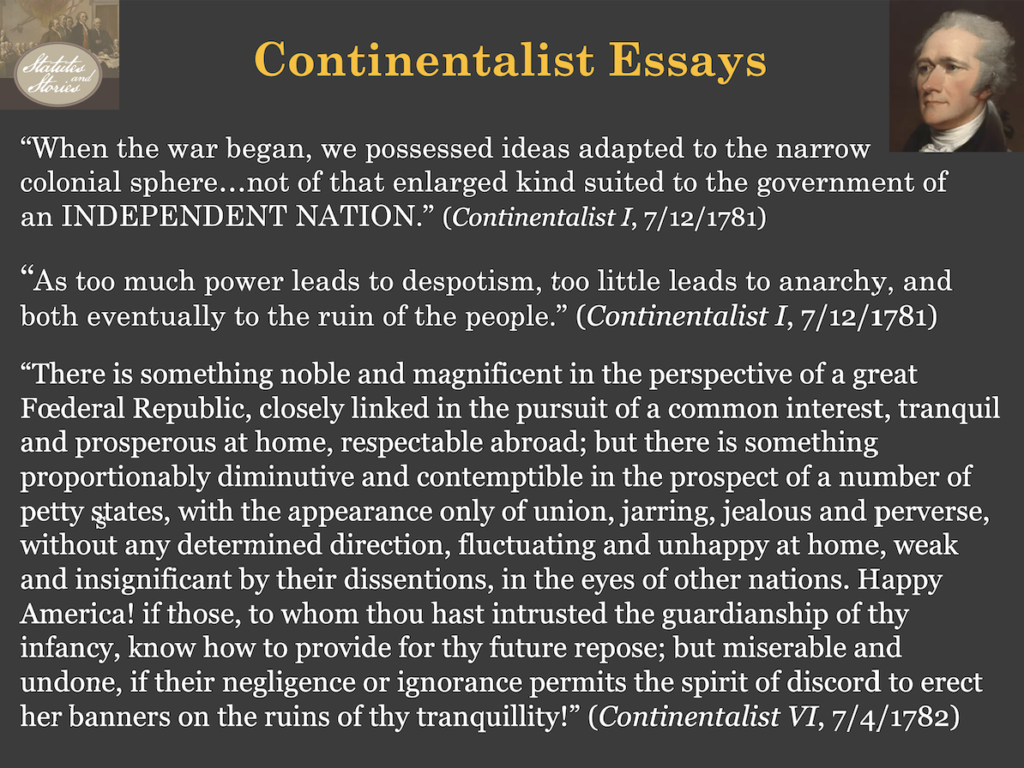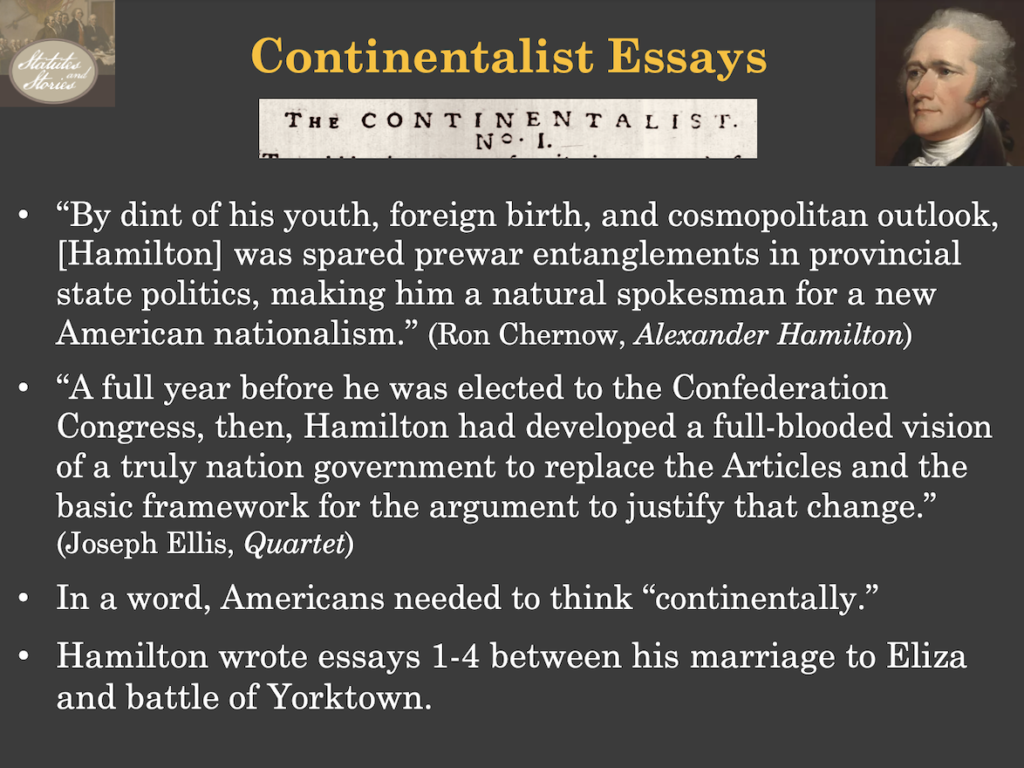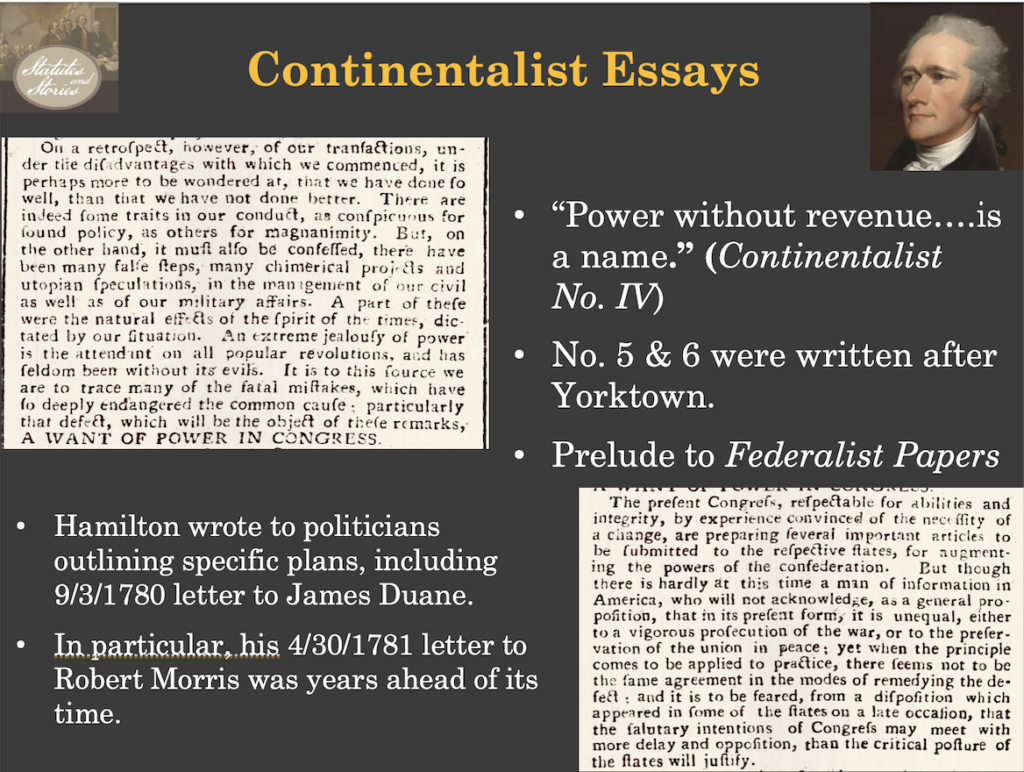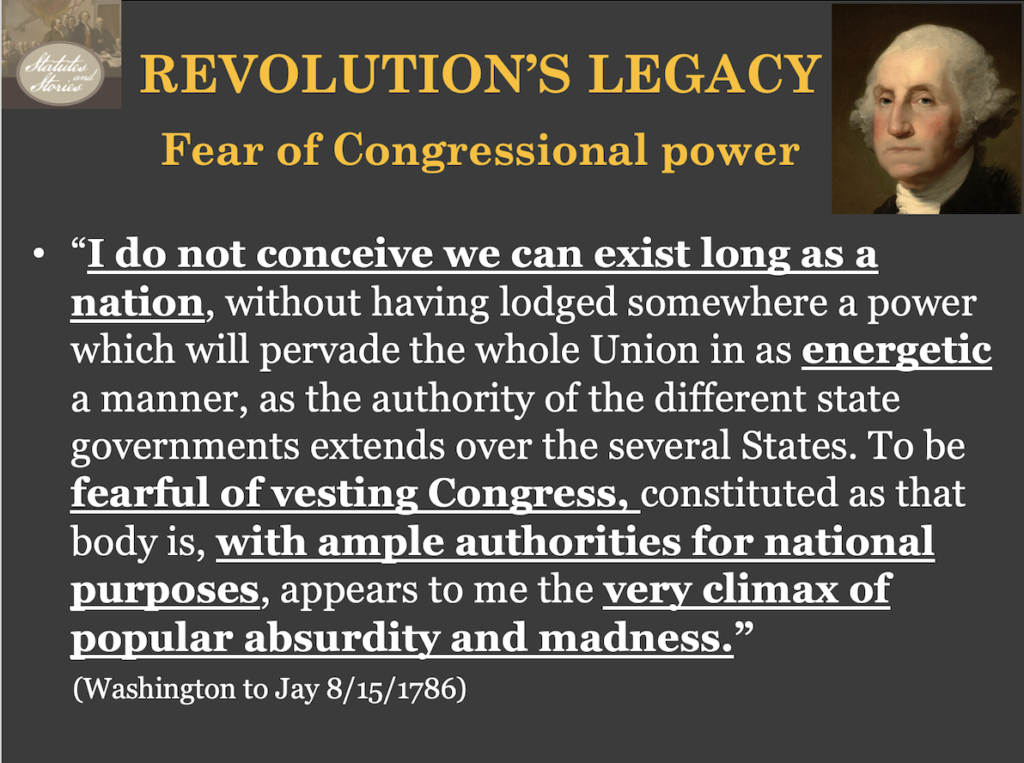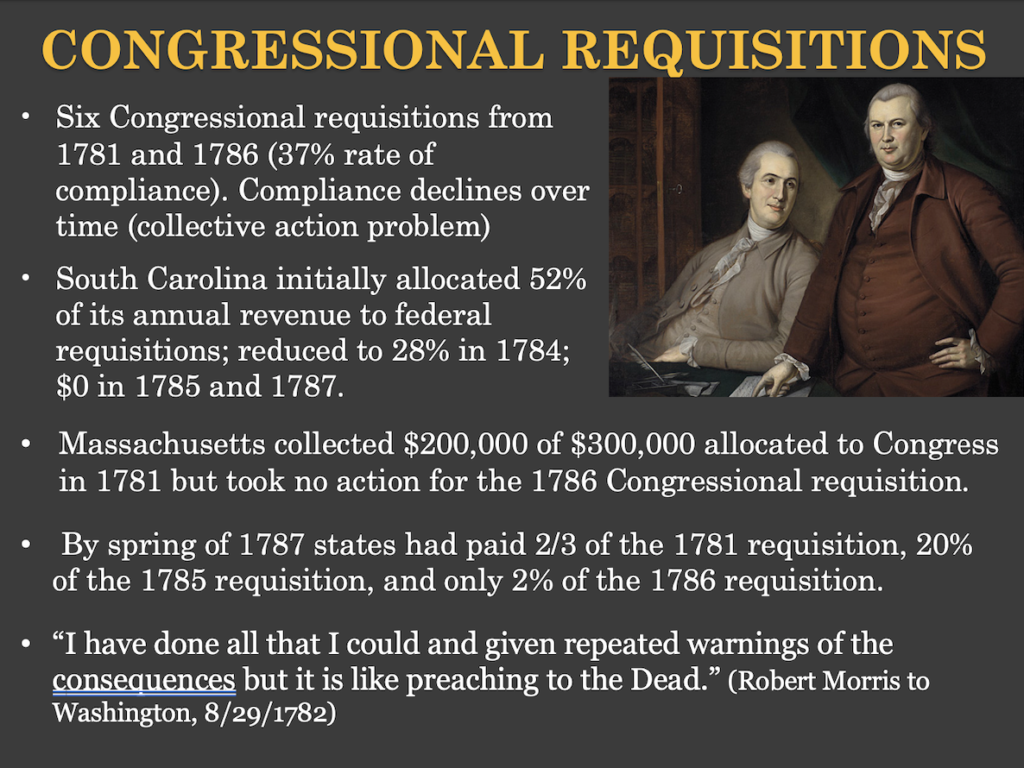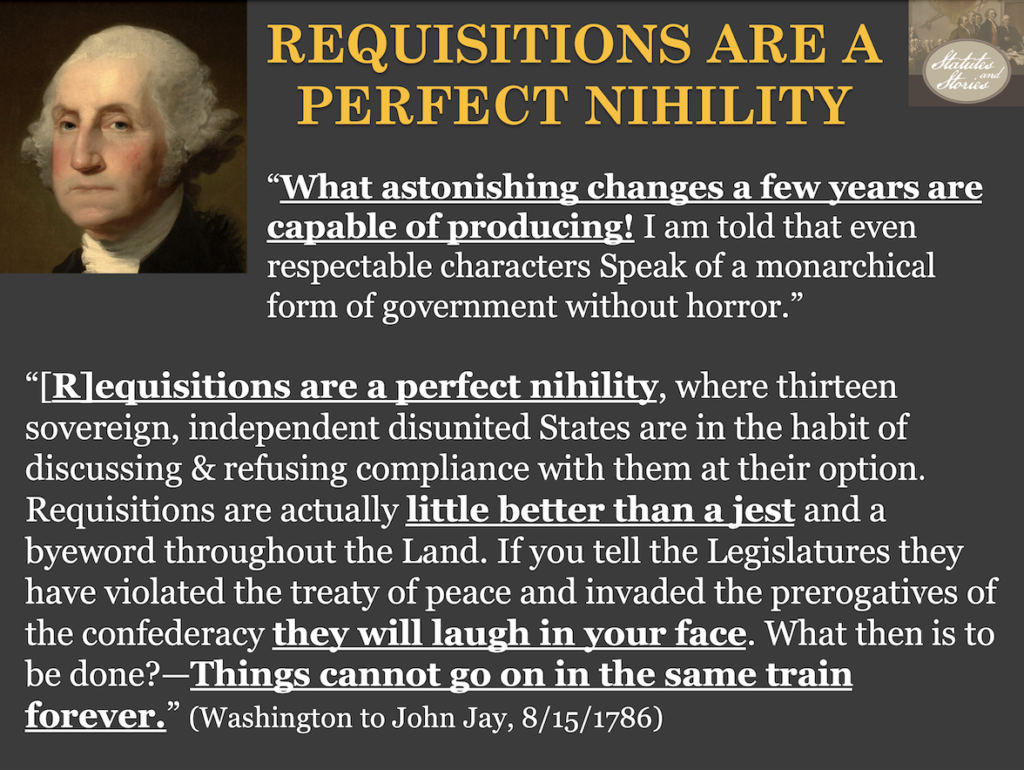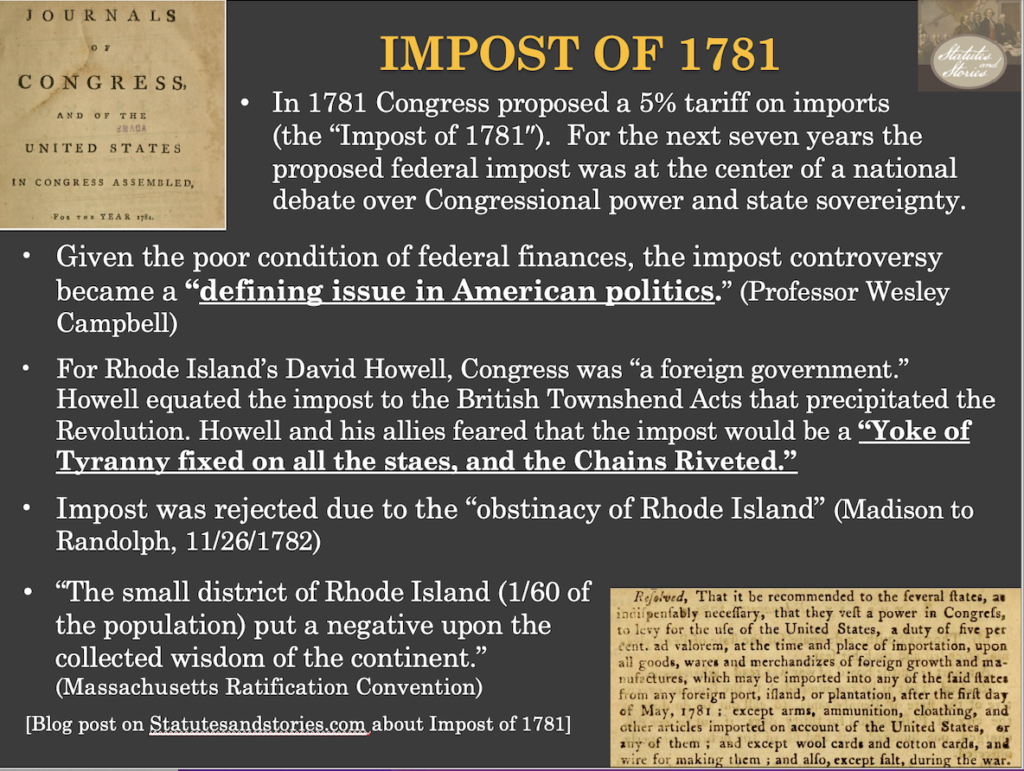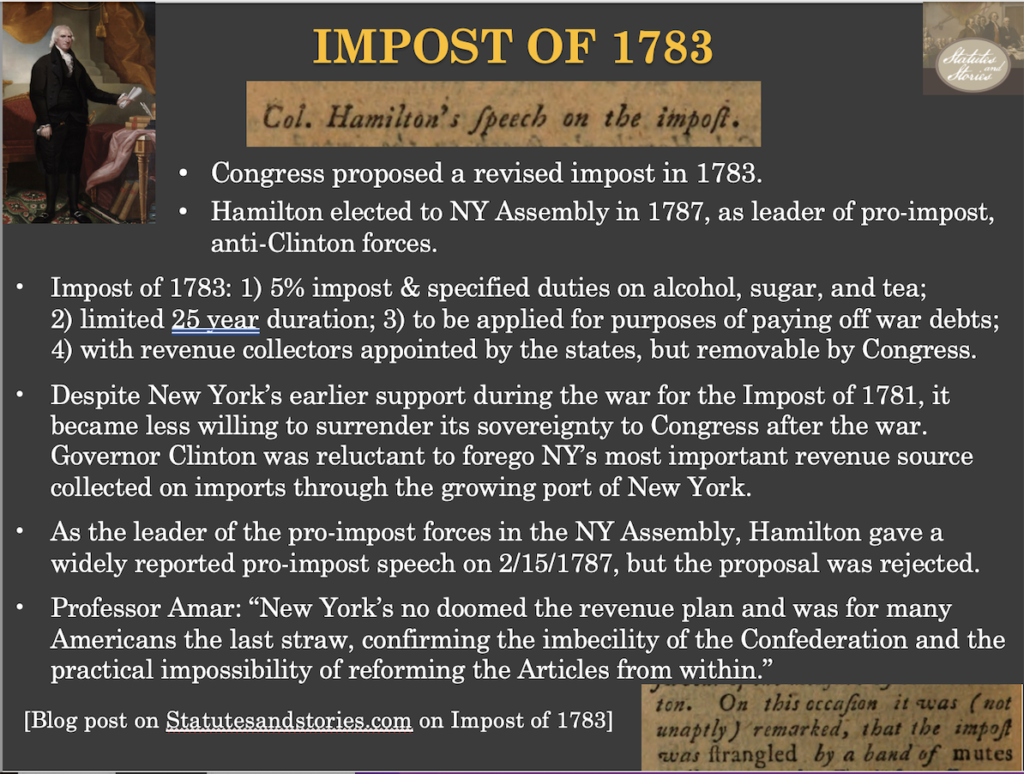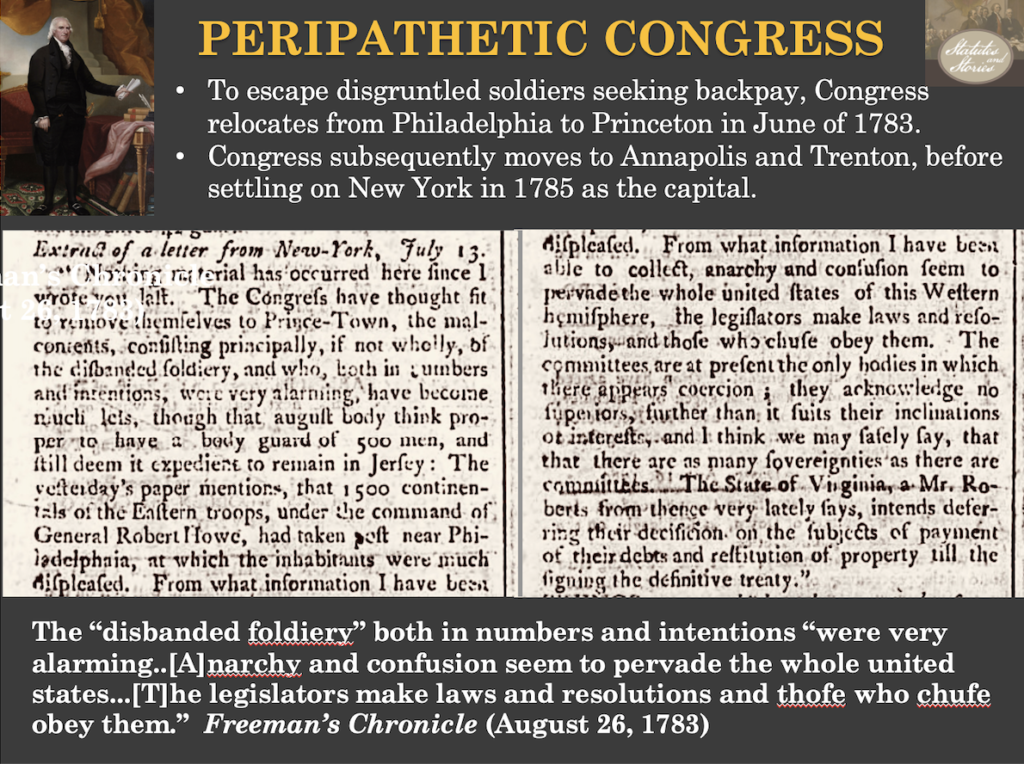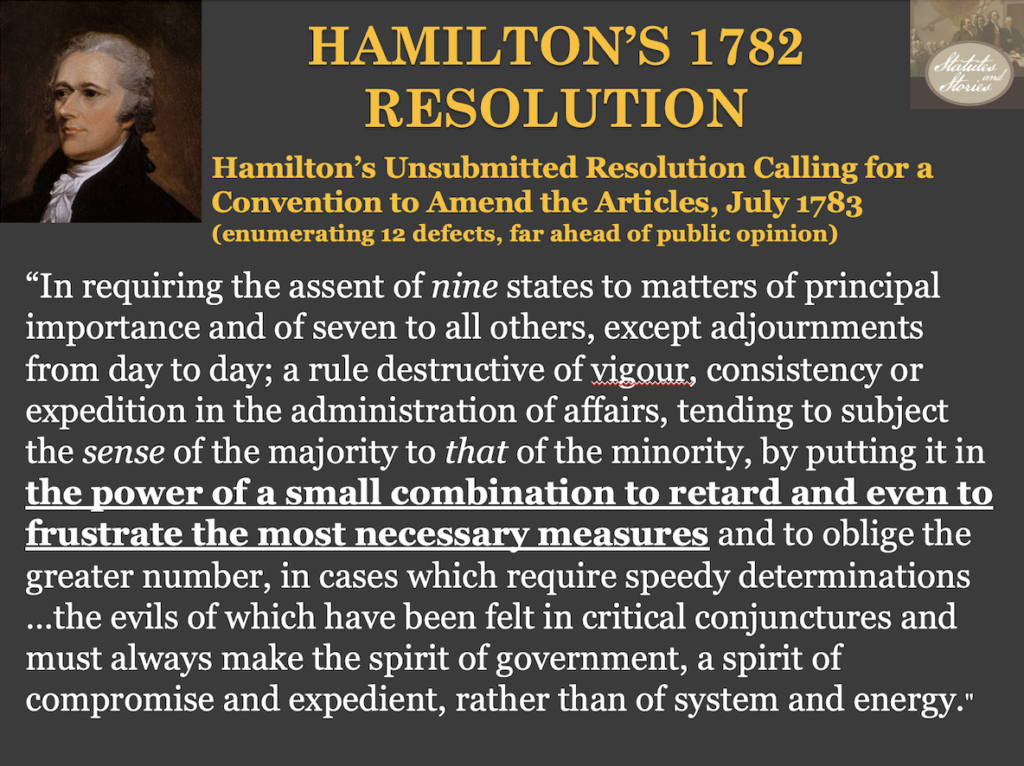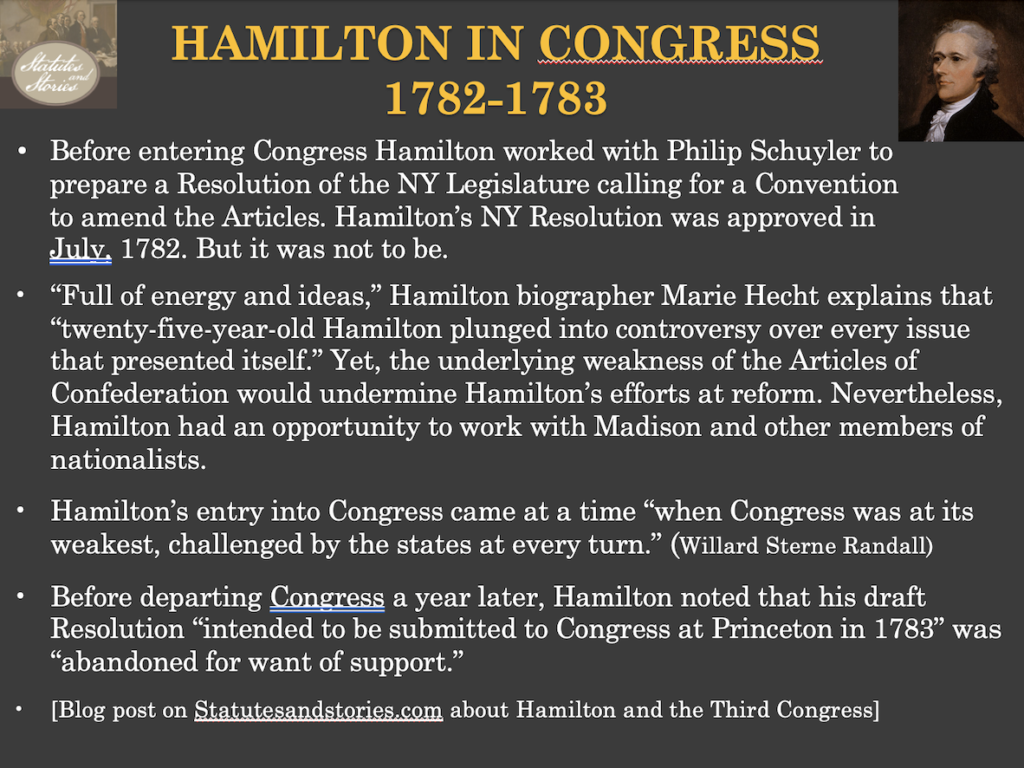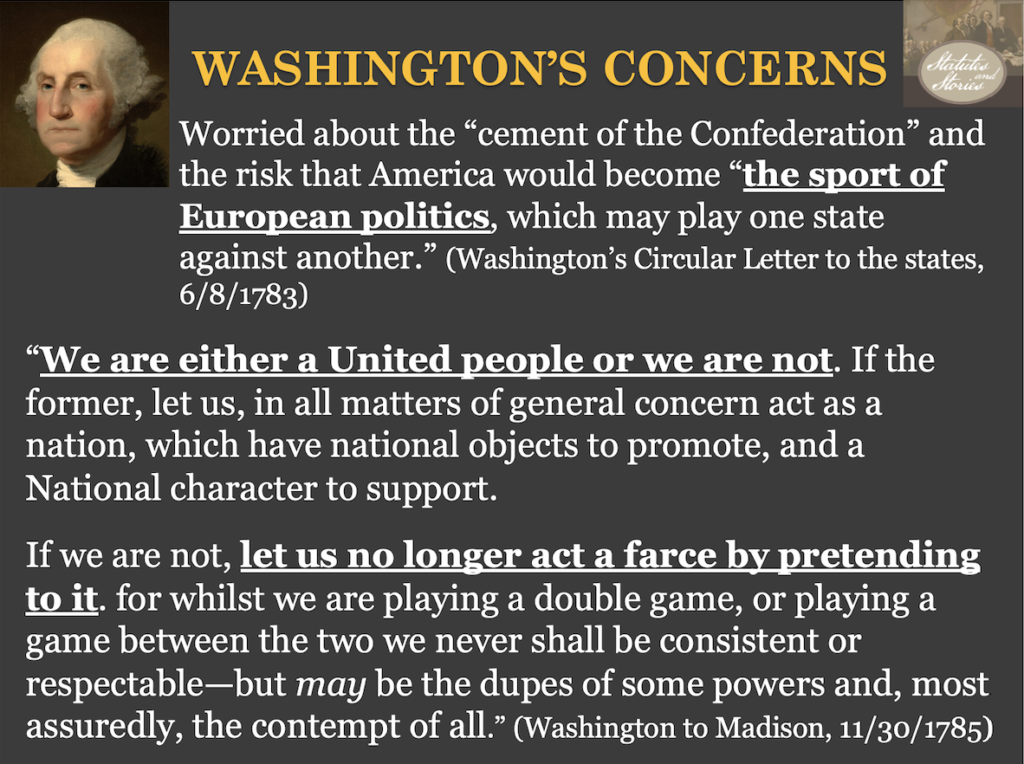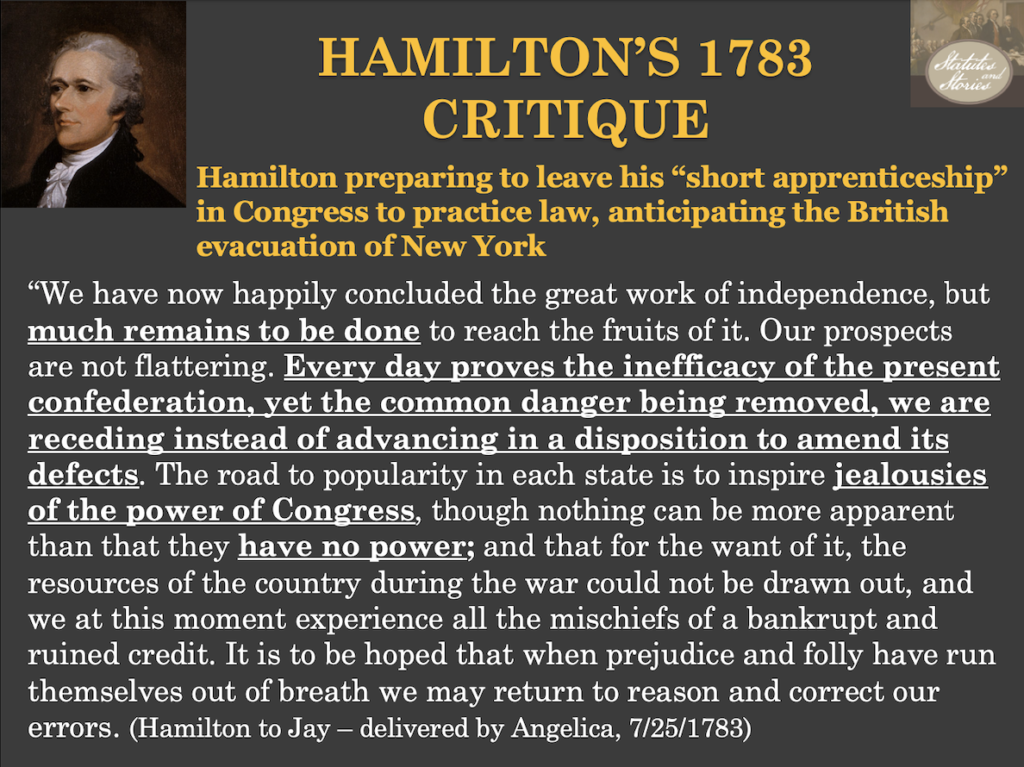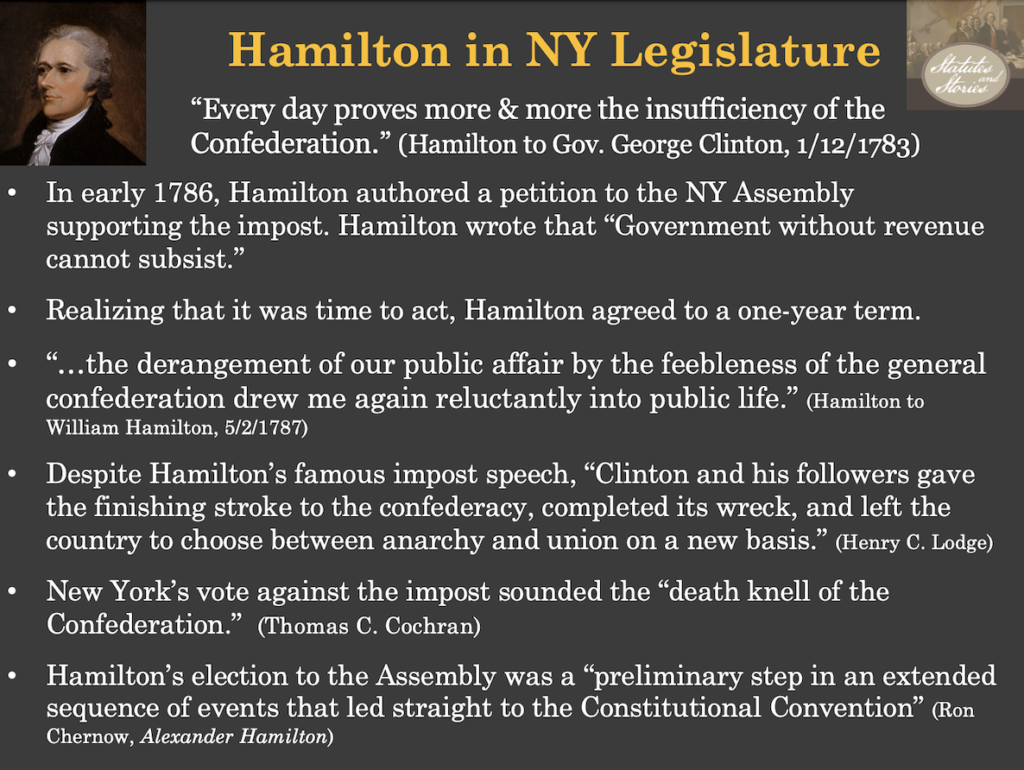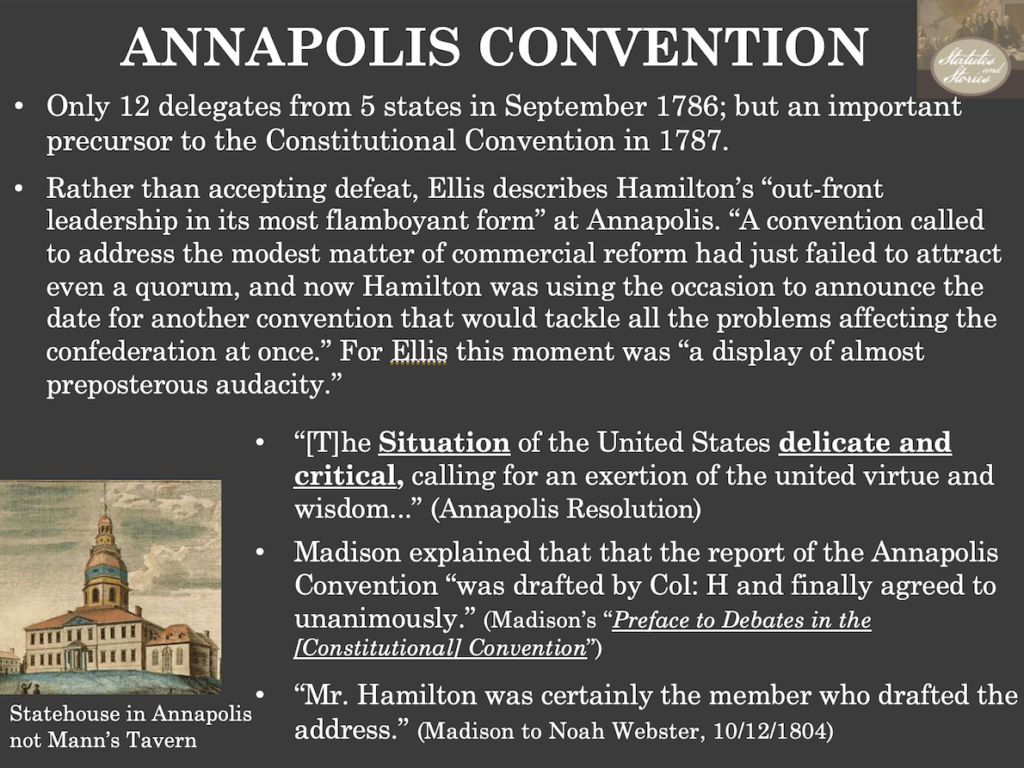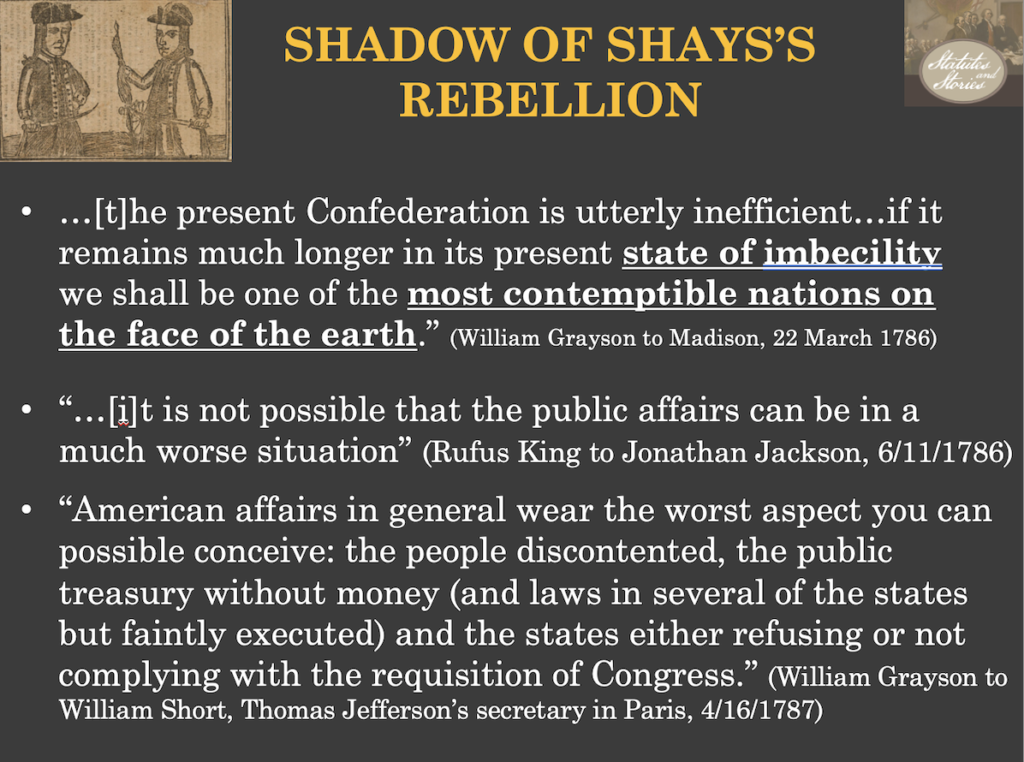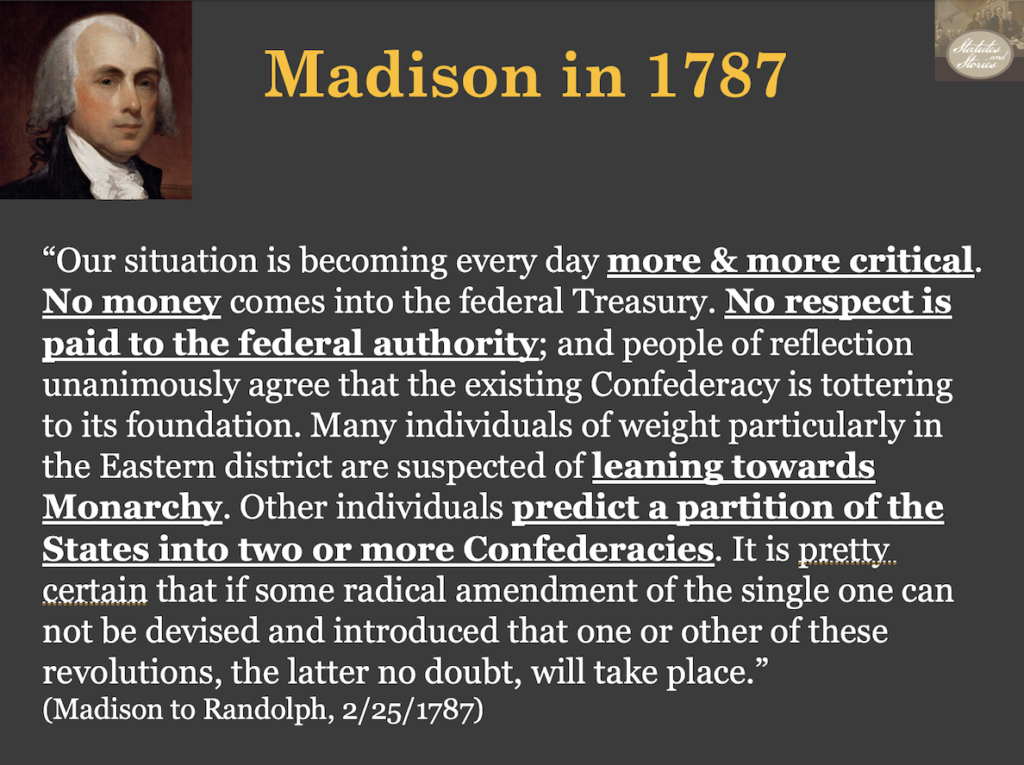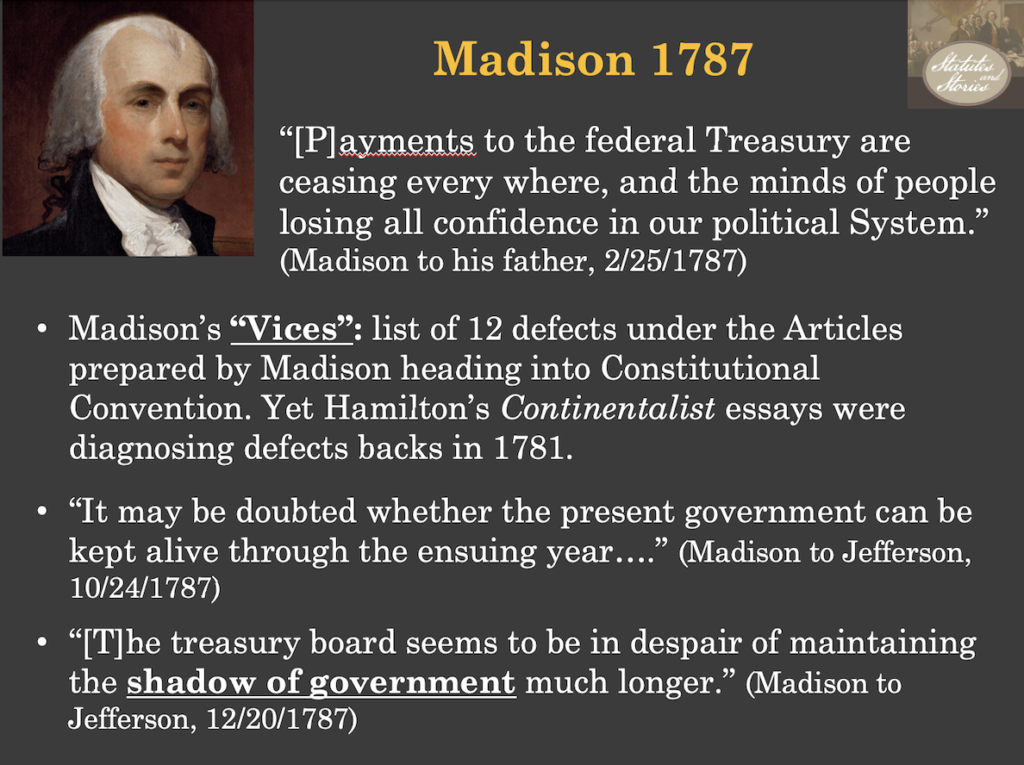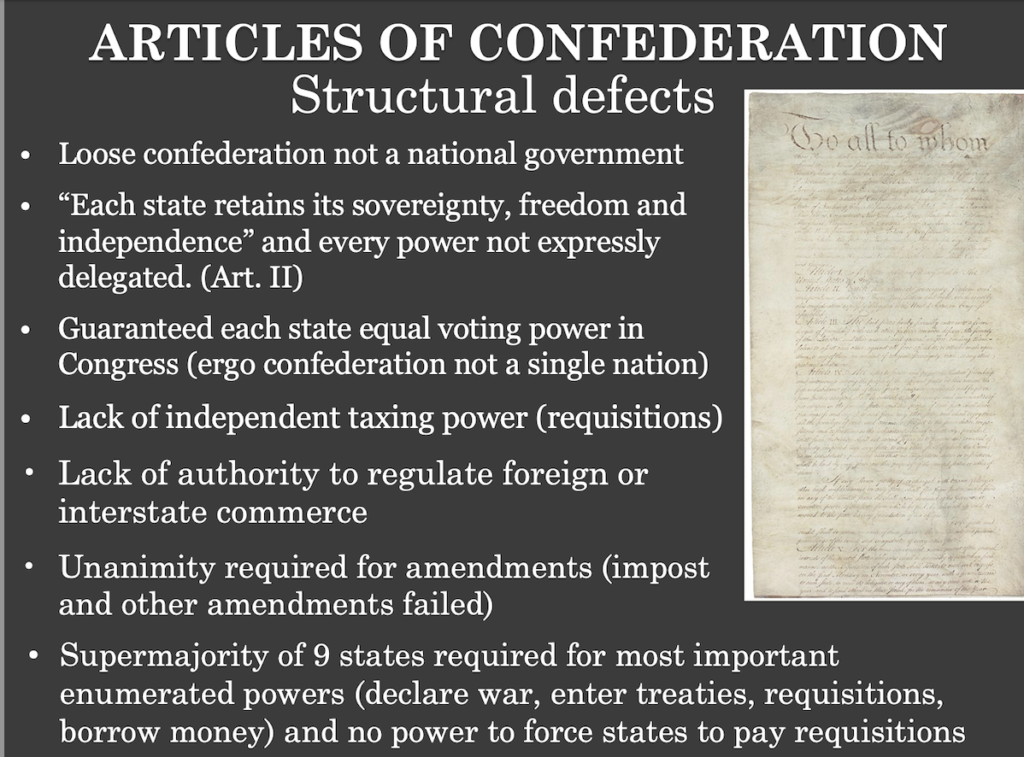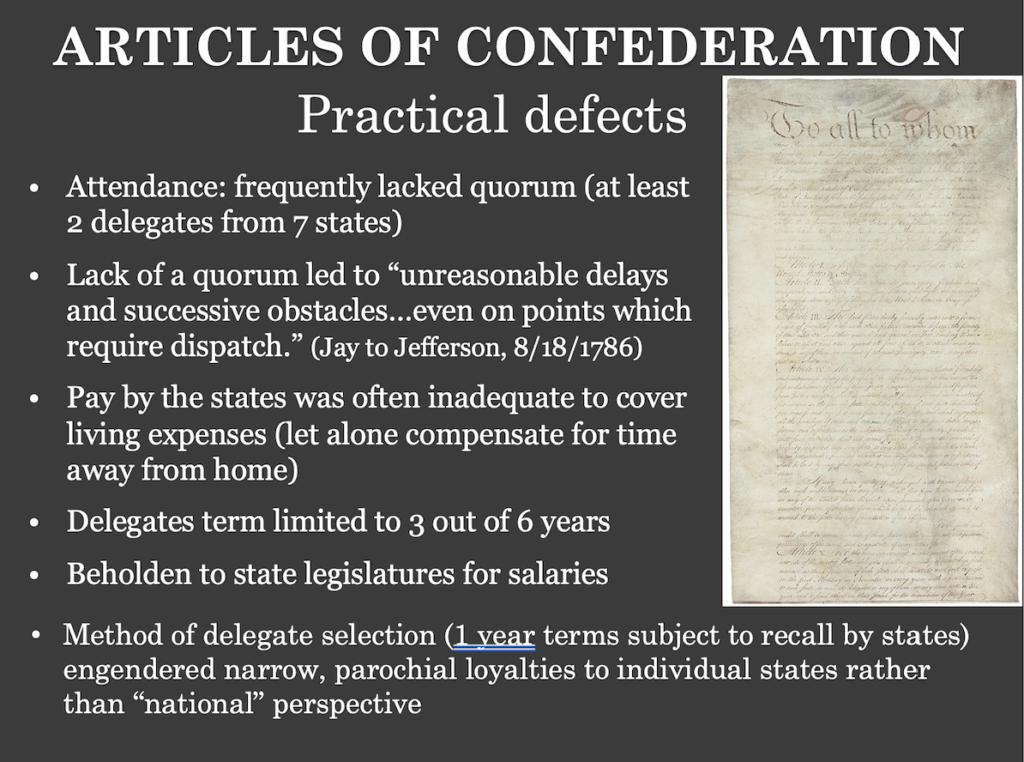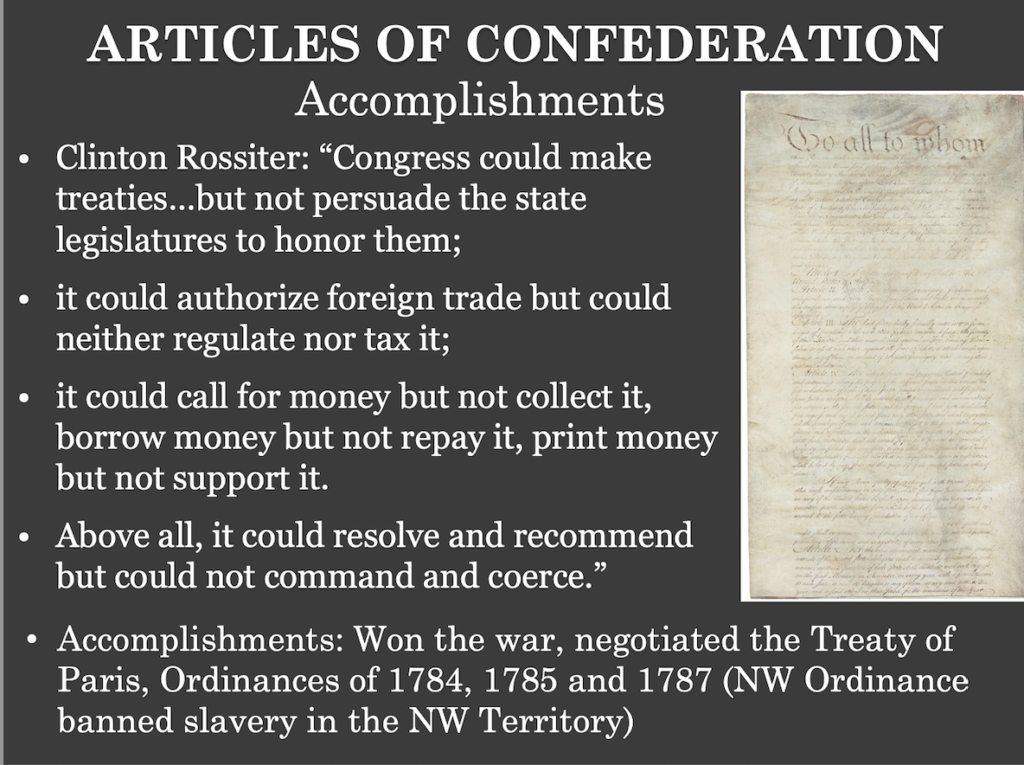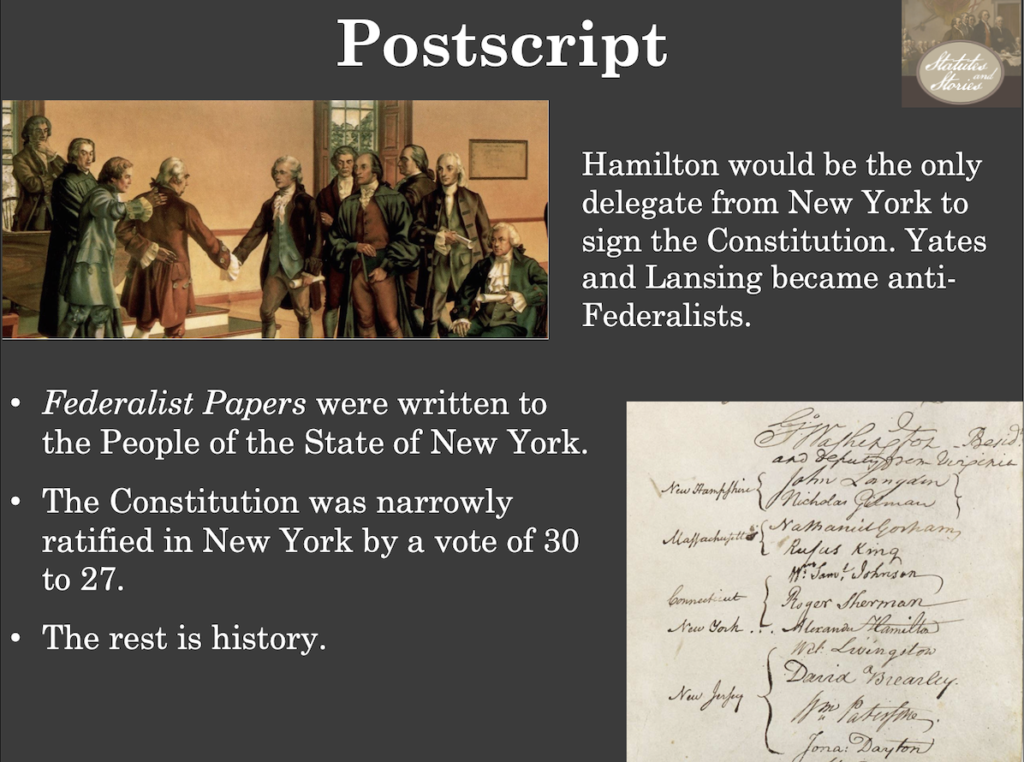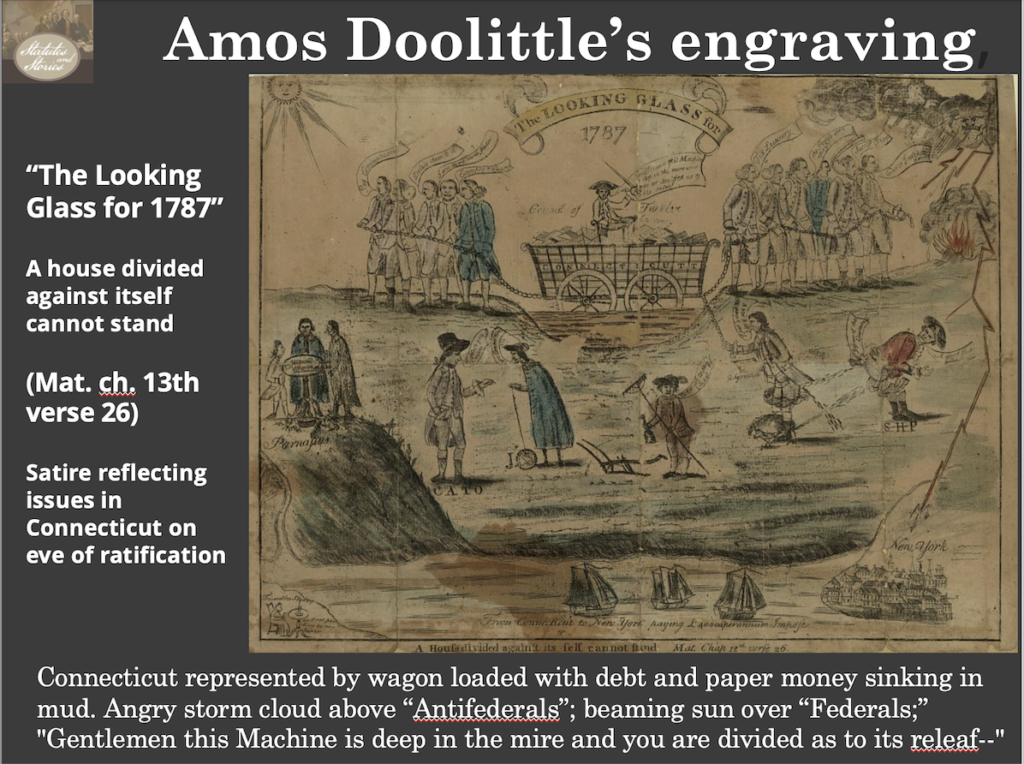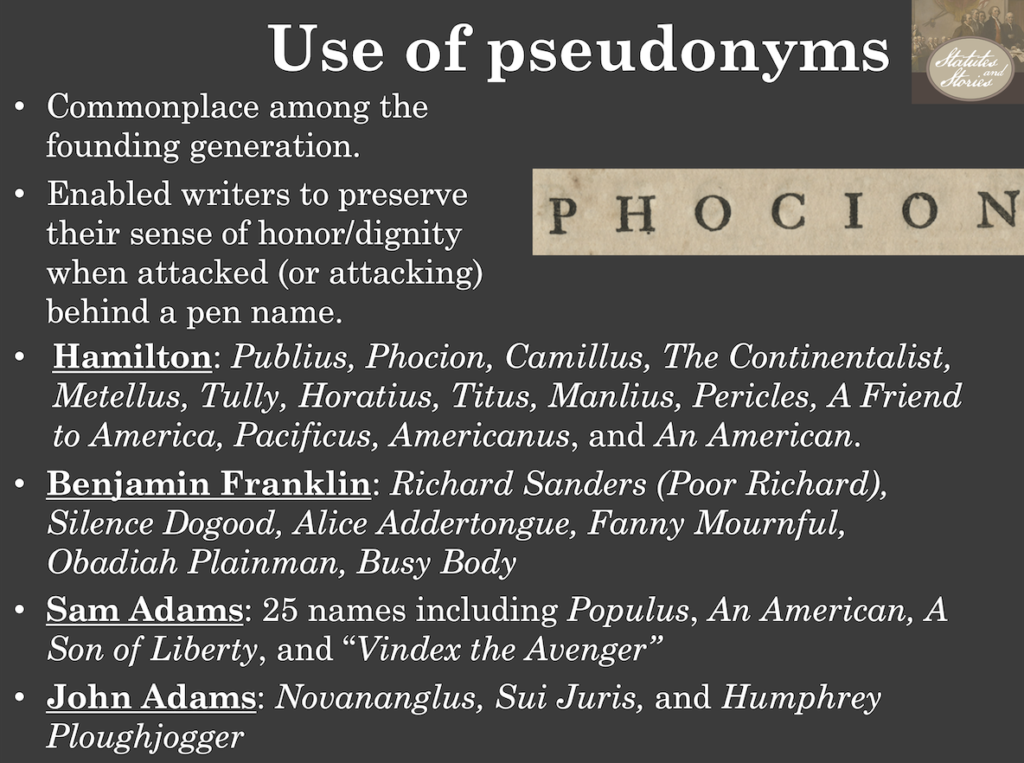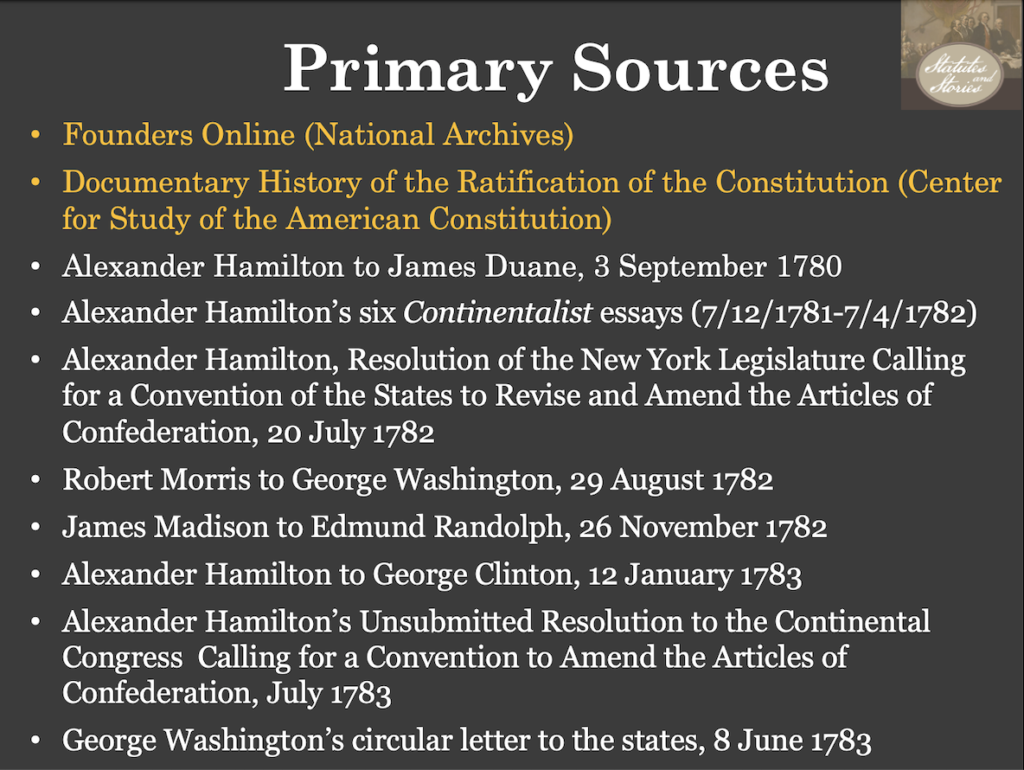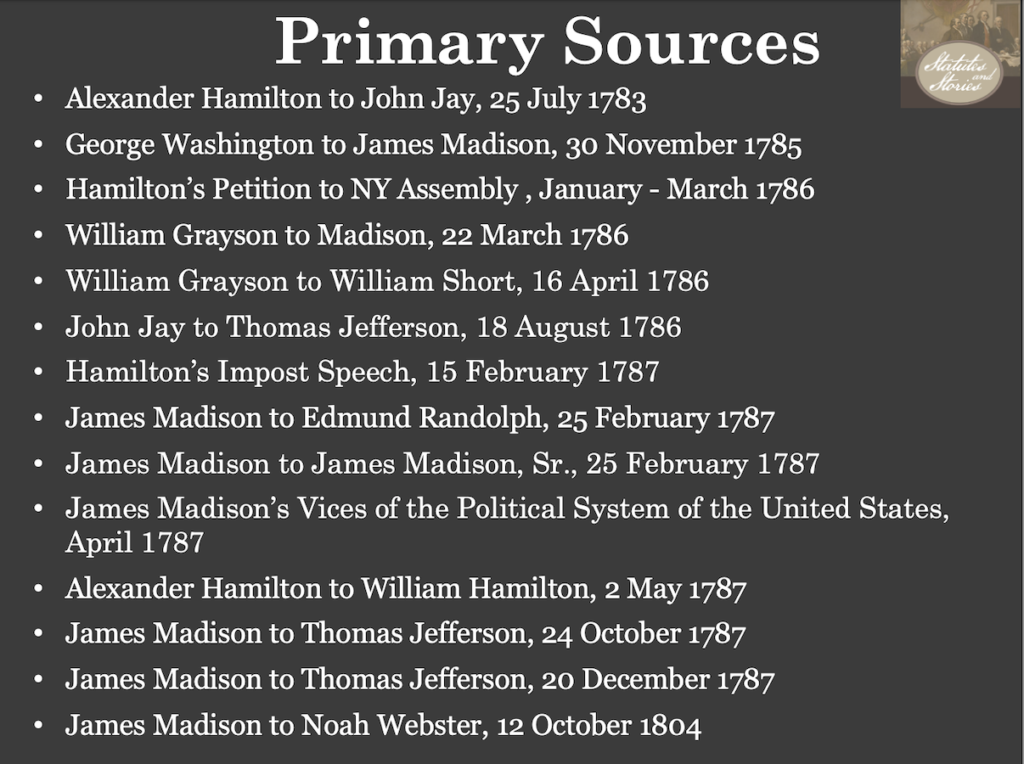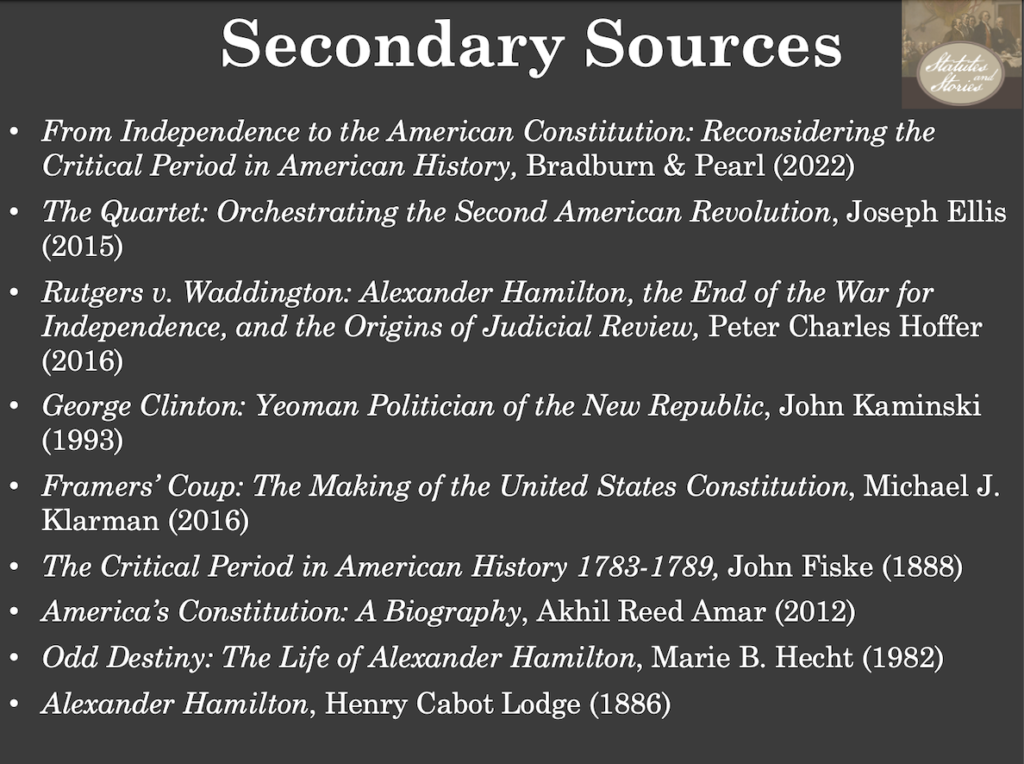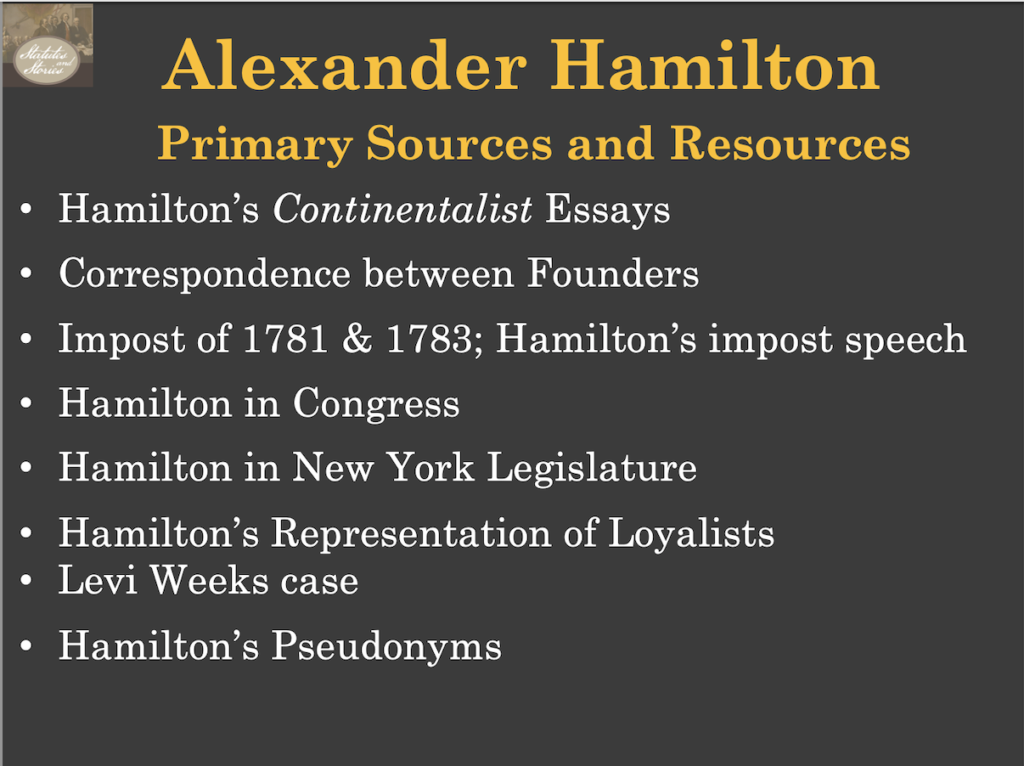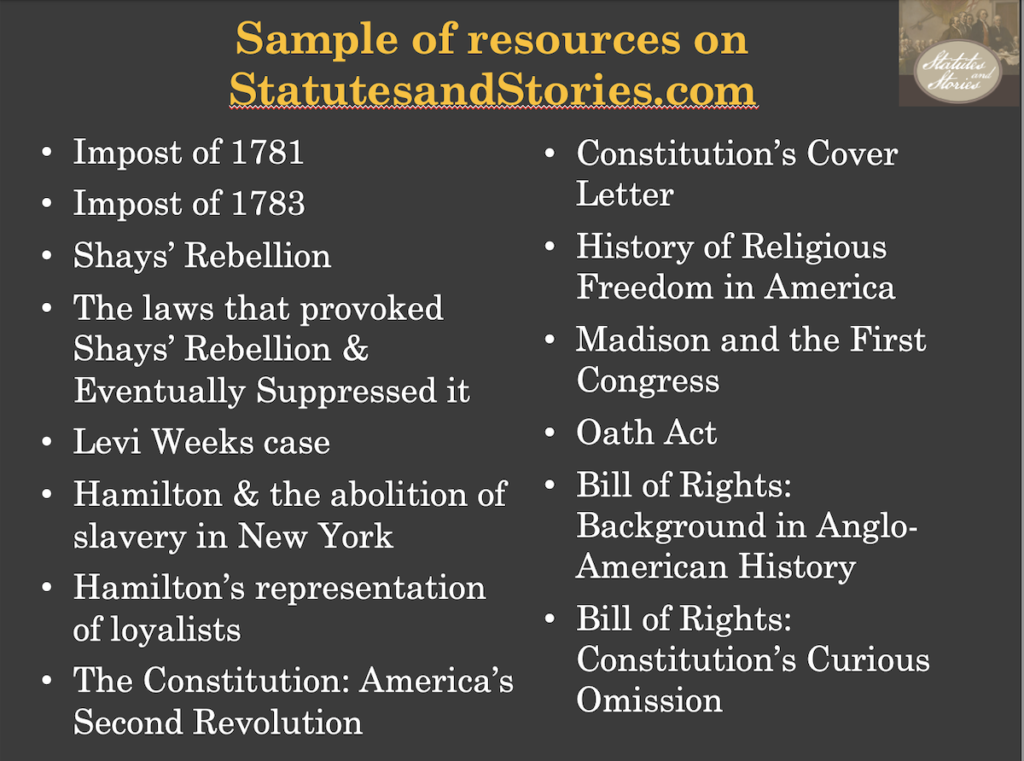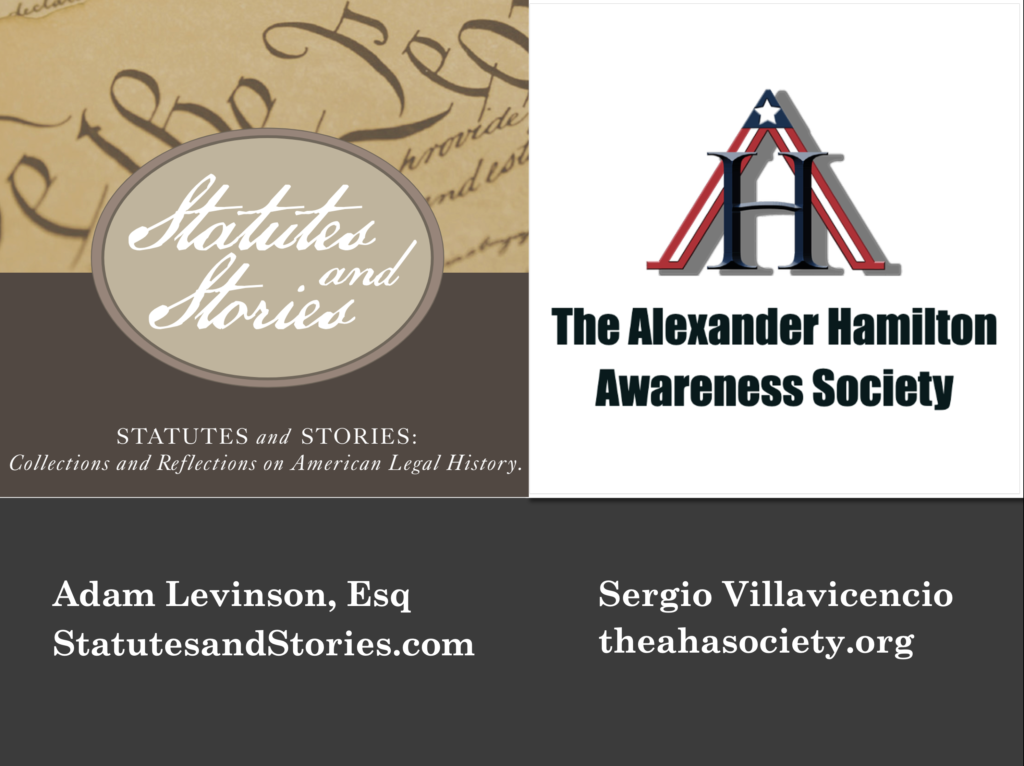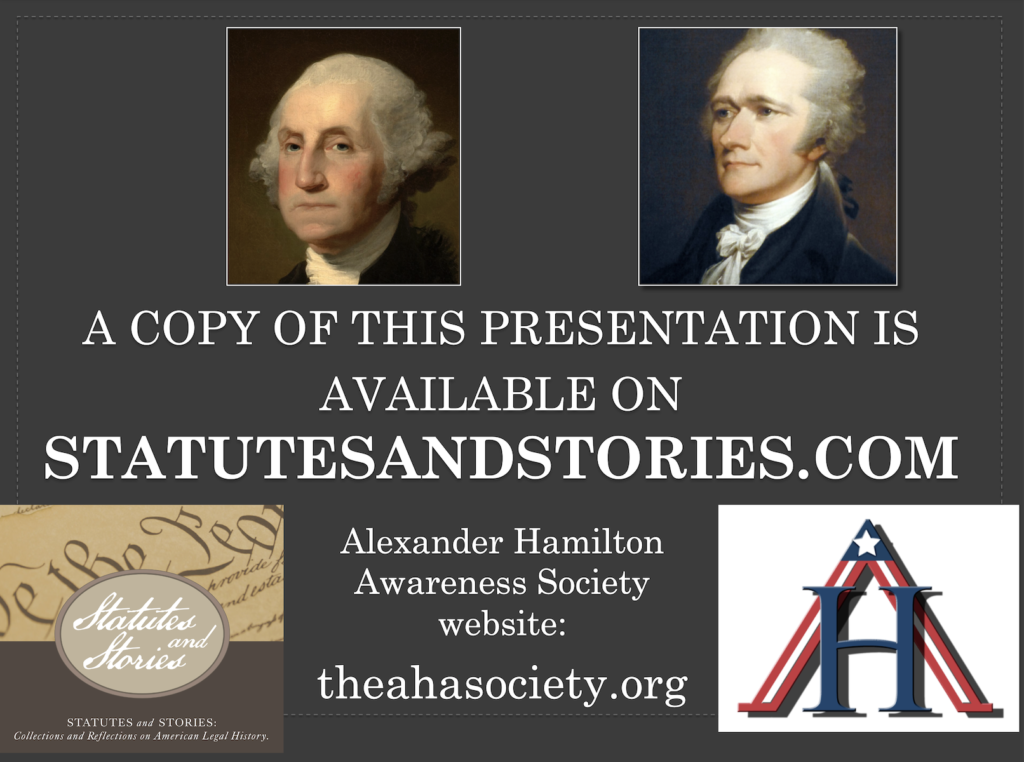NCHE PowerPoint Presentation 2023
The so-called Critical Period
StatutesandStories.com is proud to present the following PowerPoint presentation at the National Council for History Education (NCHE) 2023 Conference:
The so-called Critical Period: Freedom from Anarchy and Chaos; Freedom to Federalism and Order
The theme for the 2023 NCHE Conference is “Freedom from Freedom To.” The PowerPoint examines the Critical Period from 1783-1789, telling the story of the forces dividing/unifying the new nation after the Treaty of Paris.
Copied below is an abstract of the presentation along with images of the PowerPoint slides, which are available upon request:
Following the Revolutionary War, the newly independent states attempted to translate the lofty concepts of the Declaration of Independence into action. This process was easier said than done. During the so-called Critical Period (1783-1789), the fiercely independent states confronted foundational issues of individual liberty versus governmental power. Ultimately, the Critical Period concluded when George Washington was sworn in as President under the new Constitution. While early historians focused on lawlessness and economic challenges during this chaotic period, modern historians acknowledge accomplishments under the Articles of Confederation. What can we learn from America’s early struggle between anarchy and order?
The Powerpoint discusses early laws passed by the Confederation Congress, the failed requisition process, the proposed Impost of 1781 and 1783, Alexander Hamilton’s Continentalist essays, correspondence by the founding fathers and mothers, and other primary sources. Please be patient to allow the slides to download, depending on your internet connection.
Here are links to the posts identified above:
THE IMPOST OF 1783 (and Hamilton’s 2/15/1786 speech to the NY Assembly)
SHAYS’S REBELLION AND THE FOUNDERS (PART 1)
THE PEOPLE v. LEVI WEEKS (HAMILTON AND BURR FOR THE DEFENSE) (Part 1)
HAMILTON AND THE ABOLITION OF SLAVERY IN NEW YORK
THE CONSTITUTION: AMERICA’S SECOND REVOLUTION
WHO KNEW THAT THE CONSTITUTION HAS A “COVER LETTER” (Teaser to 4 part series)
MADISON AND THE FIRST CONGRESS
OATH ACT (the first Act of the first Congress)
BILL OF RIGHTS – PART 1: BACKGROUND IN ANGLO-AMERICAN HISTORY
BILL OF RIGHTS – PART 2: CONSTITUTIONAL CONVENTION’S CURIOUS OMISSION
Here are links to the correspondence discussed above, which are available on the Founders Online website from the National Archives:
George Washington’s circular letter to the states, June 8, 1783
George Washington to James Madison, 30 November 1785
George Washington to John Jay, 15 August 1786
Robert Morris to George Washington, 29 August 1782
James Madison to Edmund Randolph, 26 November 1782
James Madison to James Madison, Sr., 25 February 1787
James Madison to Edmund Randolph, 25 February 1787
James Madison’s Vices of the Political System of the United States, April 1787
James Madison to Thomas Jefferson, 24 October 1787
James Madison to Noah Webster, 12 October 1804
Alexander Hamilton’s Petition to NY Assembly January – March 1786
Alexander Hamilton’s impost speech, 15 February 1787
Alexander Hamilton to James Duane, 3 September 1780
Alexander Hamilton to George Clinton, 12 January 1783
Alexander Hamilton to John Jay, 25 July 1783
Alexander Hamilton to William Hamilton, 2 May 1797
